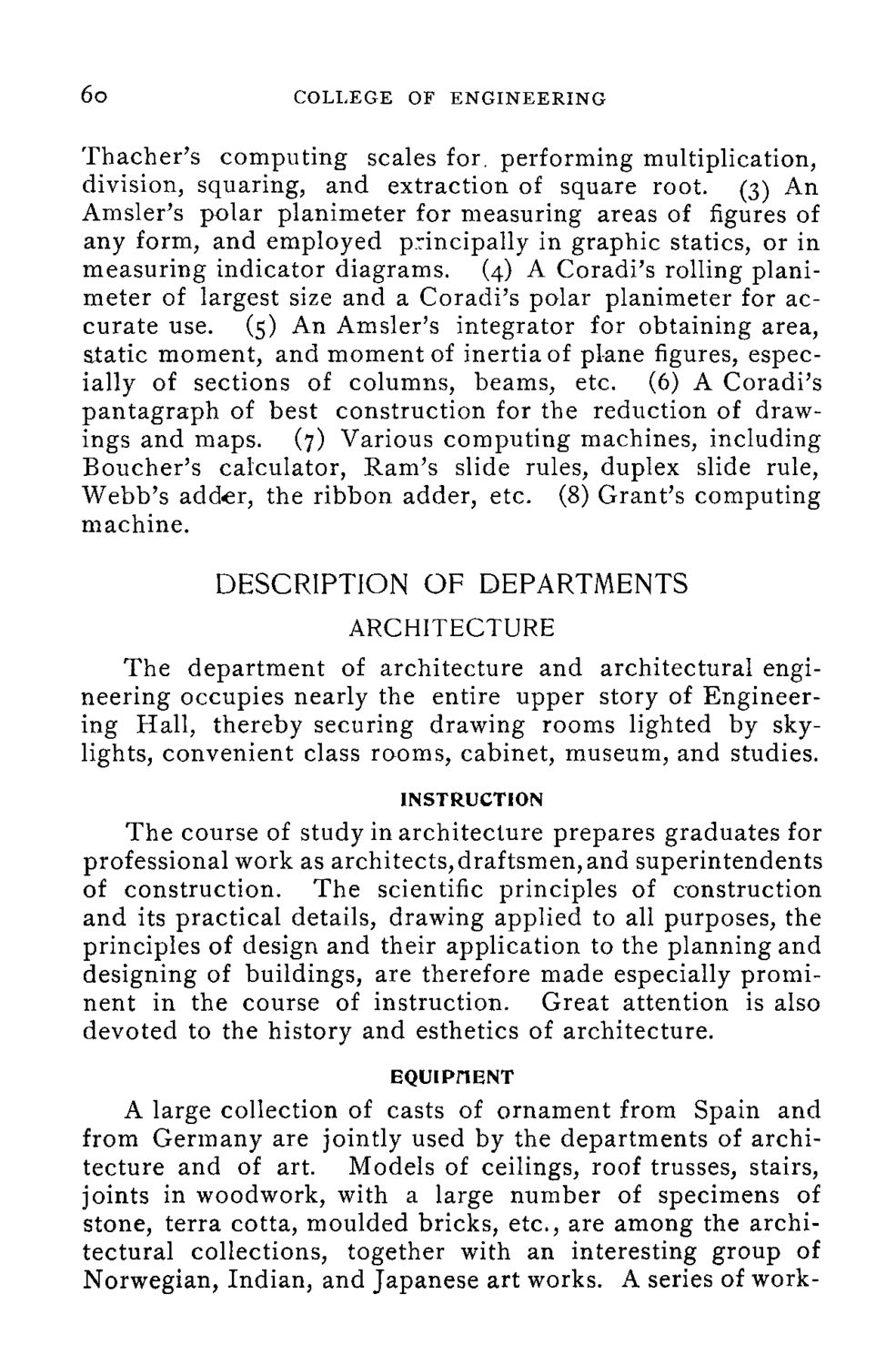| |
| |
Caption: Course Catalog - 1896-1897
This is a reduced-resolution page image for fast online browsing.

EXTRACTED TEXT FROM PAGE:
60 COLLEGE OF ENGINEERING Thacher's computing scales for. performing multiplication, division, squaring, and extraction of square root. (3) An Amsler's polar planimeter for measuring areas of figures of any form, and employed principally in graphic statics, or in measuring indicator diagrams. (4) A Coradi's rolling planimeter of largest size and a Coradi's polar planimeter for accurate use. (5) An Amsler's integrator for obtaining area, siatic moment, and moment of inertia of plane figures, especially of sections of columns, beams, etc. (6) A Coradi's pantagraph of best construction for the reduction of drawings and maps. (7) Various computing machines, including Boucher's calculator, Ram's slide rules, duplex slide rule, Webb's adder, the ribbon adder, etc. (8) Grant's computing machine. DESCRIPTION OF DEPARTMENTS ARCHITECTURE The department of architecture and architectural engineering occupies nearly the entire upper story of Engineering Hall, thereby securing drawing rooms lighted by skylights, convenient class rooms, cabinet, museum, and studies. INSTRUCTION The course of study in architecture prepares graduates for professional work as architects,draftsmen,and superintendents of construction. The scientific principles of construction and its practical details, drawing applied to all purposes, the principles of design and their application to the planning and designing of buildings, are therefore made especially prominent in the course of instruction. Great attention is also devoted to the history and esthetics of architecture. EQUIPHENT A large collection of casts of ornament from Spain and from Germany are jointly used by the departments of architecture and of art. Models of ceilings, roof trusses, stairs, joints in woodwork, with a large number of specimens of stone, terra cotta, moulded bricks, etc., are among the architectural collections, together with an interesting group of Norwegian, Indian, and Japanese art works. A series of work-
| |